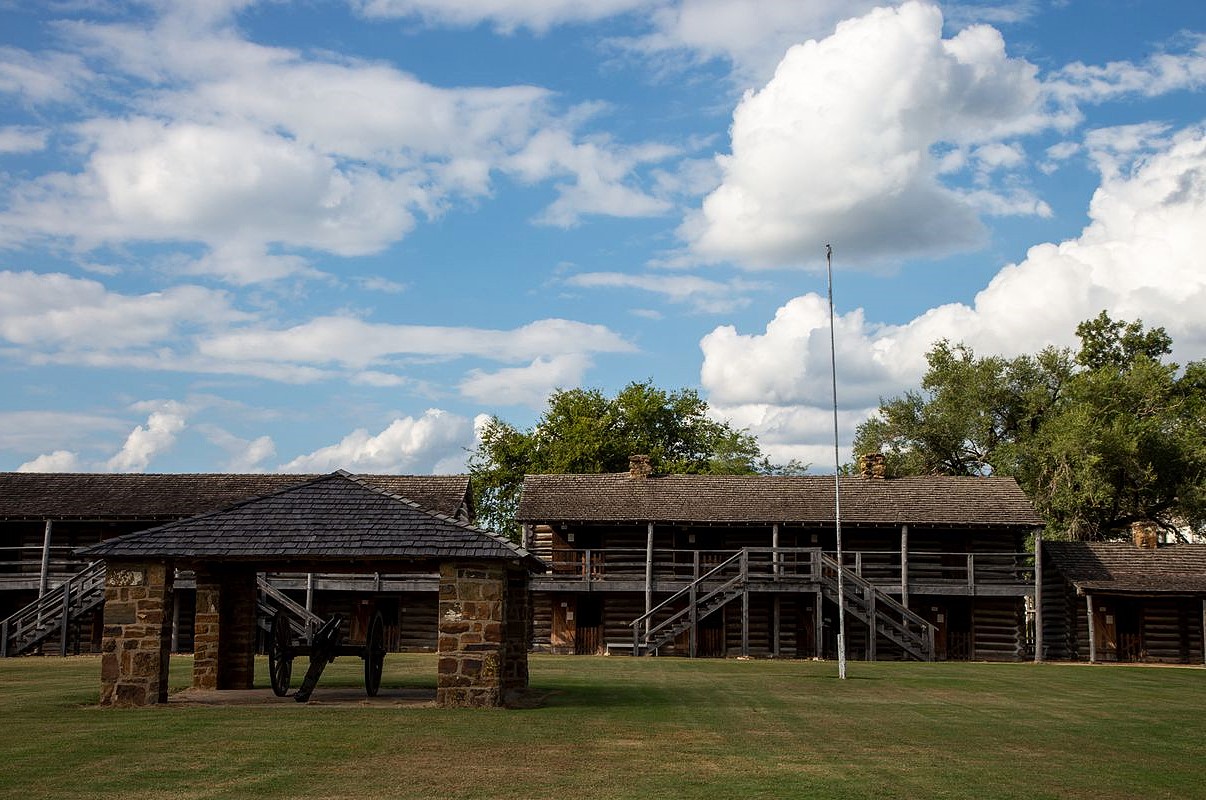Step Back In Time At Fort Gibson Historic Site

Ever wondered what life was like in the early 19th century? Fort Gibson Historic Site in Oklahoma offers a unique glimpse into America's past. Established in 1824, this fort played a crucial role in the Indian Territory and the westward expansion. Walking through the grounds, you'll see restored buildings, artifacts, and reenactments that bring history to life. Whether you're a history buff or just looking for an educational outing, Fort Gibson has something for everyone. Kids will love the interactive exhibits, while adults can appreciate the rich historical context. Ready to step back in time? Fort Gibson awaits!
Discover the Rich History of Fort Gibson
Fort Gibson Historic Site, located in Oklahoma, offers a fascinating glimpse into the past. This site, established in 1824, played a significant role in American history. Let's explore some key spots within this historic landmark.
The Old Barracks
The old barracks housed soldiers who protected the frontier. Walking through these quarters, you can almost hear the echoes of past conversations and feel the presence of those who once lived here.
- Enlisted Men's Quarters: These rooms were home to the rank-and-file soldiers. Simple and functional, they reflect the daily life of a frontier soldier.
- Officer's Quarters: More spacious and comfortable, these quarters housed the officers. They include period furnishings that give a sense of the officers' lifestyle.
- Mess Hall: This communal dining area was where soldiers gathered for meals. It offers a glimpse into their diet and social interactions.
The Stockade
The stockade served as a defensive structure and a place of confinement. Its sturdy walls tell stories of conflict and resolution.
- Guardhouse: This building held prisoners and served as a lookout point. It’s a stark reminder of the fort's role in maintaining order.
- Powder Magazine: Here, ammunition and gunpowder were stored. The thick walls and secure design highlight the importance of safeguarding these materials.
- Blockhouse: This fortified structure provided a vantage point for defense. Its design reflects the military strategies of the time.
The Hospital
The hospital at Fort Gibson was crucial for treating soldiers and settlers. It stands as a testament to the medical practices of the 19th century.
- Surgical Room: This room was used for surgeries and medical procedures. The tools and equipment on display illustrate the challenges faced by medical practitioners.
- Patient Wards: These wards housed the sick and injured. They offer insight into the conditions and treatments provided to patients.
- Apothecary: This area stored medicines and remedies. It showcases the types of treatments available during that era.
The Commissary
The commissary was the heart of supply and logistics at Fort Gibson. It ensured that soldiers and settlers had the necessary provisions.
- Supply Depot: This building stored food, clothing, and other essentials. It highlights the logistical efforts required to sustain the fort.
- Bakery: Fresh bread was a staple for the fort's inhabitants. The bakery's large ovens and baking tools provide a glimpse into daily life.
- Butcher Shop: Meat was an important part of the diet. The butcher shop shows how livestock was processed and prepared.
The Parade Ground
The parade ground was the center of activity at Fort Gibson. It was used for drills, ceremonies, and social gatherings.
- Flagpole: The flagpole stands tall as a symbol of the fort's presence. It was the focal point for many ceremonies.
- Drill Field: Soldiers practiced their maneuvers here. The open space allowed for large formations and training exercises.
- Bandstand: Music played a significant role in military life. The bandstand hosted performances that boosted morale and provided entertainment.
The Cemetery
The cemetery at Fort Gibson is a solemn reminder of those who lived and died at the fort. It honors the memory of soldiers and settlers alike.
- Gravesites: The gravesites include markers for soldiers, officers, and their families. Each tells a story of sacrifice and service.
- Memorials: Various memorials pay tribute to specific individuals and groups. They reflect the fort's diverse history and the people who shaped it.
- Monuments: These structures commemorate significant events and figures. They serve as lasting reminders of the fort's historical importance.
Reliving History at Fort Gibson
Fort Gibson Historic Site offers a unique glimpse into America's past. Walking through the fort, you can almost hear the echoes of soldiers and settlers who once called this place home. The well-preserved buildings and informative exhibits make it easy to imagine life in the 19th century.
Whether you're a history buff or just looking for a fun day trip, Fort Gibson has something for everyone. The site provides educational opportunities for kids and adults alike, making it a great family outing. Plus, the surrounding area offers beautiful scenery and plenty of spots for a picnic.
Don't miss out on this chance to step back in time. Fort Gibson Historic Site is a must-visit destination that brings history to life in a way that's both engaging and educational. Pack your bags and head to Fort Gibson for an unforgettable experience.

